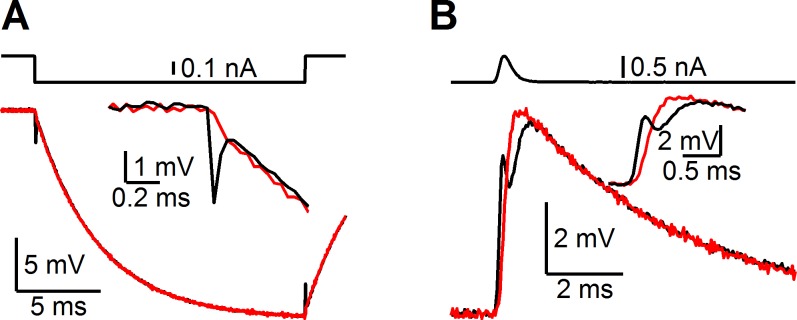Fig. 2.
Voltage transients in 1- vs. 2-electrode recordings. Recordings are made using 2 electrodes on a single model cell. Current (top traces) is passed through 1 electrode with optimized bridge balance and capacitance compensation. The current-passing electrode reports large, fast voltage transients (bottom black traces). The actual voltage of the model cell shows no such transients (bottom red traces). For square pulse stimuli (A), the transients are well-isolated to the beginning and end of the pulse, but for variable currents (B), such as would be expected in dynamic-clamp experiments, the transients significantly distort membrane potential measurements. Thus dual-electrode dynamic clamp is recommended if at all possible.

